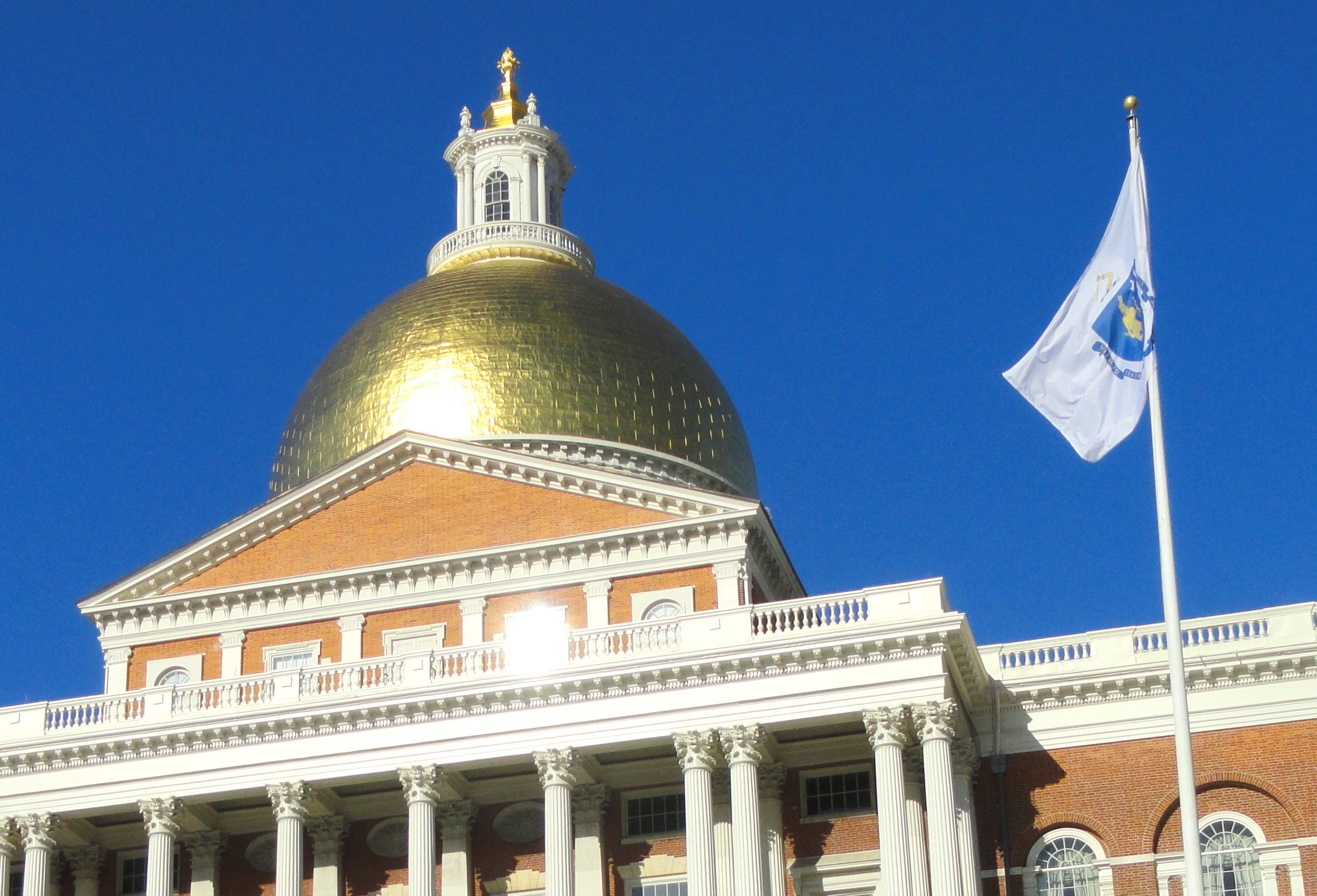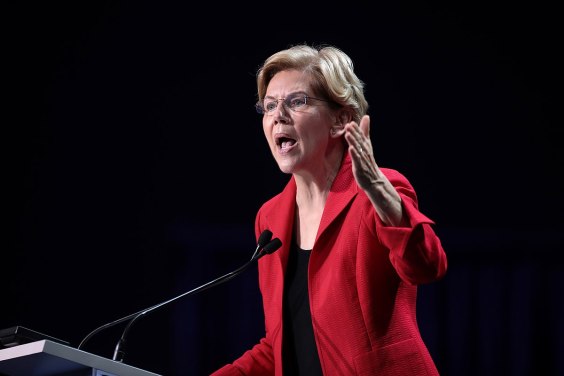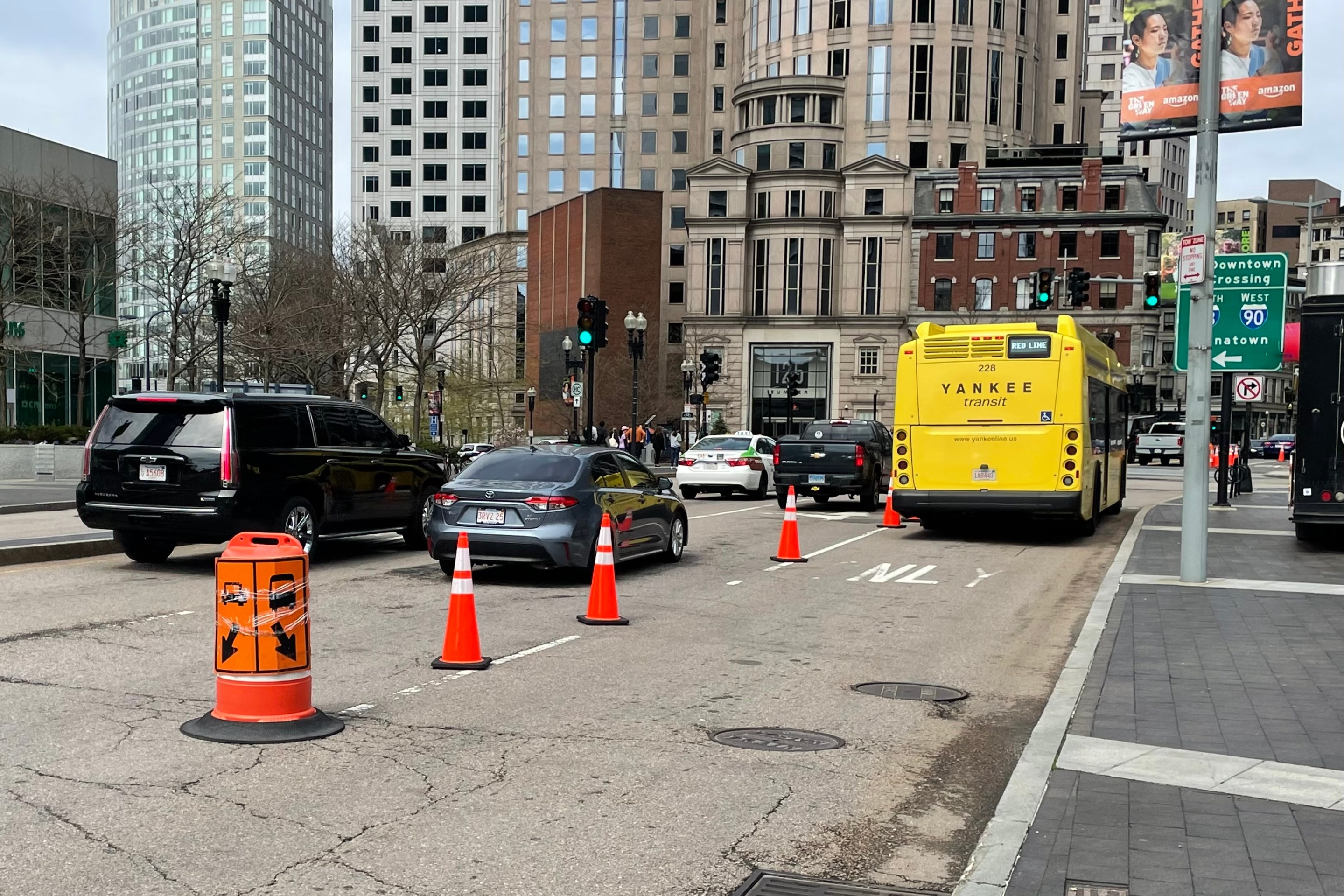Gov. Baker Sends Traffic Safety Bill Back to Legislators With Objections to Safer Speed Limits and Passing Rules
1:14 PM EDT on September 26, 2022

The Massachusetts State House in downtown Boston.
Governor Baker won't sign the Legislature's Act to Reduce Traffic Fatalities unless lawmakers remove provisions that would allow cities to reduce speed limits on state-controlled roadways and would require motorists to give bike riders and pedestrians more space at higher speeds.
It's yet another hurdle for the transportation safety legislation that’s been in the works for more than a decade, and finally managed to pass both chambers of the legislature earlier this month.
In a letter to House lawmakers, Governor Baker wrote that "I support several measures in this bill that were included in my road safety bills, including the requirement that Commonwealth vehicles in a certain category include convex and crossover mirrors, backup cameras, and lateral protective devices."
The letter also stated that the Governor supported "a provision establishing a minimum distance for motor vehicles when passing vulnerable users," which includes people riding bicycles, people walking on foot, and roadway construction workers.
But Gov. Baker objected to a provision that would have required a larger buffer at higher speeds. The legislature's bill would require that drivers leave three feet of space when passing vulnerable users at 30 mph or lower, four feet of space when driving 40 mph, five feet at 50 mph, and so on.
"As currently written, however, the passing distance formula presents enforcement and messaging challenges that would undermine the goal of a clearly understood and enforceable standard," wrote the Governor.
The Governor proposed amending the language to set a simpler 3-foot standard, without adjustments for higher speeds.
The governor also objected the bill's proposal to let cities and towns reduce speed limits to 25 mph on state-owned roadways, including the Department of Conservation and Recreation's dangerous "parkways."
Baker's letter asserted that "the posting of arbitrary speed limits defined outside of the standard process required by the Manual on Uniform Traffic Control Devices (MUTCD)... could jeopardize the use of federal funds that support road and bridge construction in Massachusetts."
This appears to refer to the MUTCD's use of the so-called "85th percentile rule," a discredited piece of traffic engineering folklore that lets the most lead-footed drivers establish posted speed limits on some roadways.
A 2017 investigation from the National Transportation Safety Board concluded that "there is not strong evidence" to support the use of the 85th percentile rule, but it nonetheless remains as the recommended standard for setting speed limits in a nation where 42,915 people died in motor vehicle traffic crashes last year.
Baker's own administration has publicly urged federal policymakers to reject the 85th percentile rule in favor of "a flexible approach" that "accounts for safety and land use“ in the next version of the MUTCD, which is expected to be released next year.
The MUTCD also does not apply to "statutory" speed limits, which are speed limits established by legislation. When the City of Boston reduced its default statutory speed limit from 30 to 25 mph statutory on city streets in 2017, research found that there was a 29 percent reduction in speeding incidents where drivers exceeded 35 mph, simply from posting a lower number on speed limit signs.
That speed limit change has not jeopardized the use of any of the City of Boston's federal highway funding. In fact, at the NACTO Designing Cities conference in Boston last month, Federal Highway Administration Administrator Stephanie Pollack specifically cited Boston's example in successfully reducing speeds as a proven method to promote safer speeds.
"If people tell you that Federal Highway’s position is that the only thing that matters when you set a speed limit is speed distribution, that is not true," said Pollack.
Read More:
Stay in touch
Sign up for our free newsletter




